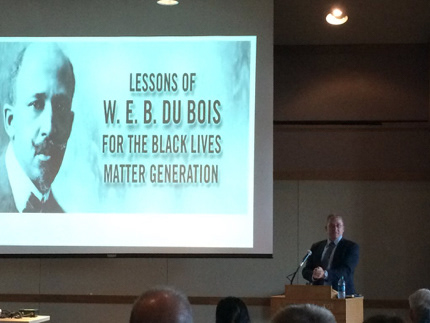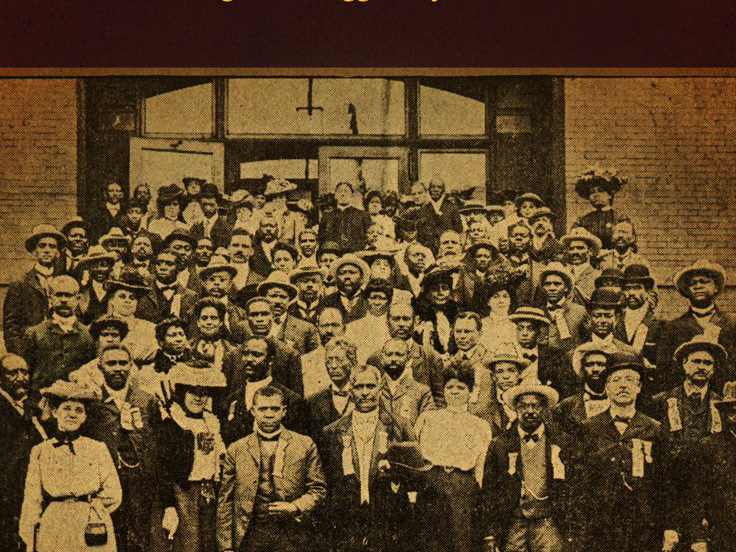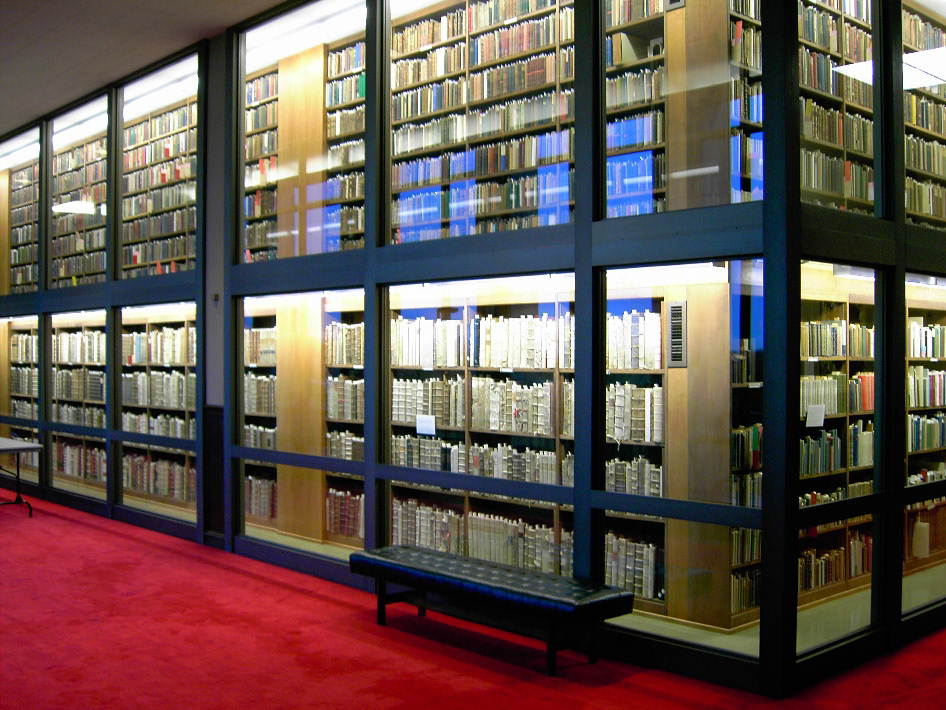A regular column in The Lawrence Times on race, history, and politics.
C-SPAN American History TV: Congress Investigates
In 1871, a joint House-Senate committee investigated conditions in the southern states following a wave of violence against freed slaves and others.
C-SPAN - March 23, 2024
The Niagara Movement | The Early Battle for Civil Rights explores the Black elite and intellectual society at the turn of the 20th century, a class rarely presented. It examines the heated debate and conflict between W.E.B DuBois and William Monroe Trotter with Booker T. Washington on how to best uplift the race and secure equality for their community.
Henry Louis Gates Jr. presents a vital new four-hour documentary series on Reconstruction: America After the Civil War. The series explores the transformative years following the American Civil War, when the nation struggled to rebuild itself in the face of profound loss, massive destruction, and revolutionary social change. The twelve years that composed the post-war Reconstruction era (1865-77) witnessed a seismic shift in the meaning and makeup of our democracy, with millions of former slaves and free black people seeking out their rightful place as equal citizens under the law. Though tragically short-lived, this bold democratic experiment was, in the words of W. E. B. Du Bois, a ‘brief moment in the sun’ for African Americans, when they could advance, and achieve, education, exercise their right to vote, and run for and win public office.
The rich history of America’s Historically Black Colleges and Universities (HBCUs) began before the end of slavery, flourished in the 20th century, and profoundly influenced the course of the nation for over 150 years — yet remains largely unknown. With Tell Them We Are Rising: The Story of Black Colleges and Universities, the latest documentary from Stanley Nelson (Black Panthers, Freedom Riders) and Marco Williams, the powerful story of the rise, influence, and evolution of HBCUs comes to life.
Five decades ago, social unrest gripped cities across the country, at one point even spilling into the streets of Kansas City. Today, we find out what the "long, hot summer" of 1967 can teach us about race relations and cultural diversity in present-day America.
Muhammad Ali’s Legacy via Deutsche Welle News
Shawn Leigh Alexander and Kres Harrington discuss Muhammad Ali’s legacy on Deutsche Welle on June 10, 2016.
Shawn Leigh Alexander and Kres Harrington discuss Muhammad Ali’s legacy on Deutsche Welle on June 10, 2016.
In sports, everyone is equal: Train hard and the strongest will win. But are sports really played on an equal playing field? A local thinker says they aren't — and you can see it from Pop Warner to the Super Bowl.
We explore the intersection of race, sports and business.
The Black Leader in the 19th Century Who Warned Us About a Donald Trump
Civil rights activist and journalist T. Thomas Fortune was one of the most eloquent and instrumental voices of black America from 1880 to 1928. In 1883 Fortune, who was born into slavery in Florida, relocated to New York and became the lead editor of the New York Globe (subsequently named the Freeman and the Age), which quickly became the most widely read black paper of the era. Using the paper as his pulpit he became a prominent outspoken critic of southern racism, a promoter of racial solidarity and race pride, and an uncompromising advocate for civil and political rights of African Americans. He was also the mastermind behind the creation of the nation’s first national civil rights organization, the Afro-American League, which provided the framework for National Association for the Advancement of Colored People. His writing and activism directly influenced a generation of black protest leaders of the late nineteenth and early twentieth centuries, including W. E. B. Du Bois, Ida B. Wells-Barnett, Booker T. Washington and Marcus Garvey. He has a significant, though often forgotten legacy, in the black radical intellectual tradition of the twentieth century. - Read More and Here
Civil rights activist and journalist T. Thomas Fortune was one of the most eloquent and instrumental voices of black America from 1880 to 1928. In 1883 Fortune, who was born into slavery in Florida, relocated to New York and became the lead editor of the New York Globe (subsequently named the Freeman and the Age), which quickly became the most widely read black paper of the era. Using the paper as his pulpit he became a prominent outspoken critic of southern racism, a promoter of racial solidarity and race pride, and an uncompromising advocate for civil and political rights of African Americans. He was also the mastermind behind the creation of the nation’s first national civil rights organization, the Afro-American League, which provided the framework for National Association for the Advancement of Colored People. His writing and activism directly influenced a generation of black protest leaders of the late nineteenth and early twentieth centuries, including W. E. B. Du Bois, Ida B. Wells-Barnett, Booker T. Washington and Marcus Garvey. He has a significant, though often forgotten legacy, in the black radical intellectual tradition of the twentieth century. - Read More and Here
George Zimmerman and the Long History of Selling “Souvenirs”
Former neighborhood watch member George Zimmerman’s decision to sell, as he describes, “the firearm that was used to defend my life and end the brutal attack from Trayvon Martin” is just another link in the long chain of America’s historical obsession with selling and owning memorabilia connected with the murder of African Americans. - Read More and Here
Former neighborhood watch member George Zimmerman’s decision to sell, as he describes, “the firearm that was used to defend my life and end the brutal attack from Trayvon Martin” is just another link in the long chain of America’s historical obsession with selling and owning memorabilia connected with the murder of African Americans. - Read More and Here
Whites only no more: KU unveils marker to commemorate Strong Hall sit-in of 1965
Once upon a time, Kansas University Student Housing and The University Daily Kansan student newspaper allowed advertisements for off-campus rentals that specified “whites only.” That and a few other discriminatory practices at KU ended as a result of a significant civil rights event that occurred more than 50 years ago on campus. - Read More
Once upon a time, Kansas University Student Housing and The University Daily Kansan student newspaper allowed advertisements for off-campus rentals that specified “whites only.” That and a few other discriminatory practices at KU ended as a result of a significant civil rights event that occurred more than 50 years ago on campus. - Read More
W.E.B. Du Bois: An American Intellectual and Activist
W.E.B. Du Bois’ long legacy clearly, concisely covered in new book
In 1952, African-American author, scholar and civil rights leader W.E.B. Du Bois wrote an editorial in the National Guardian condemning presidential candidates Adlai Stevenson and Dwight Eisenhower for not criticizing those who flew Confederate flags at campaign rallies throughout the South.
“Du Bois wanted the nation to understand the Confederate flag is the flag of oppression. He is saying this in 1952, and we are having the same debate in 2015,” said Shawn Leigh Alexander, associate professor of African and African-American studies and director of the Langston Hughes Center at the University of Kansas.
From the Confederate flag to nuclear weapons, much of what Du Bois wrote about continues to resonate today. Alexander is the author of “W.E.B. Du Bois: An American Intellectual and Activist,” which Rowman & Littlefield Publishers released earlier this summer. - Read More
In 1952, African-American author, scholar and civil rights leader W.E.B. Du Bois wrote an editorial in the National Guardian condemning presidential candidates Adlai Stevenson and Dwight Eisenhower for not criticizing those who flew Confederate flags at campaign rallies throughout the South.
“Du Bois wanted the nation to understand the Confederate flag is the flag of oppression. He is saying this in 1952, and we are having the same debate in 2015,” said Shawn Leigh Alexander, associate professor of African and African-American studies and director of the Langston Hughes Center at the University of Kansas.
From the Confederate flag to nuclear weapons, much of what Du Bois wrote about continues to resonate today. Alexander is the author of “W.E.B. Du Bois: An American Intellectual and Activist,” which Rowman & Littlefield Publishers released earlier this summer. - Read More
According to the US census, the number of people who consider themselves multiracial has grown by 32% over the past decade. Yet America’s troubled racial past and complicated attitudes about race can pose challenges for biracial families and children. Where does a biracial person fit in? What kind of identity crisis can they face? And what should parents think of when raising a biracial child? On the other hand, being from two or more cultures can be a rich and rewarding experience. Guests Sarah Starnes, founding member of the Multiracial Family Circle; Jenee Osterheldt, reporter at the Kansas City Star and Dr. Shawn Alexander, African American Studies professor at KU, help bridge these different worlds.
A Terrible Opportunity to Teach America a Civil Rights Lesson Is in Danger of Being Missed
The Confederate battle flag will no longer fly on the statehouse grounds in South Carolina. A reality that is a remarkable turn of events less than a month after the massacre at Charleston’s Emmanuel African Methodist Episcopal Church. As has been explained many times in recent weeks, the flag was placed on the capital dome in the 1960s as a defiant response to the victories of the modern civil rights movement. The removal of the flag from the state capital is a welcome sight, but the action is symbolic and will not solve much of anything. Racism, violence and white supremacy, all wrapped up in the memory of the Confederate battle flag, alongside of “heritage” and the defense of slavery, will not disappear with the flag’s removal. In fact, the flag’s removal is the easy path. It is a political diversion to not talk about and confront the racism that continues to exist in our country. As well as the need for serious gun control and the eradication of hate groups, domestic terrorists and their sympathizers. - Read More and Here
The Confederate battle flag will no longer fly on the statehouse grounds in South Carolina. A reality that is a remarkable turn of events less than a month after the massacre at Charleston’s Emmanuel African Methodist Episcopal Church. As has been explained many times in recent weeks, the flag was placed on the capital dome in the 1960s as a defiant response to the victories of the modern civil rights movement. The removal of the flag from the state capital is a welcome sight, but the action is symbolic and will not solve much of anything. Racism, violence and white supremacy, all wrapped up in the memory of the Confederate battle flag, alongside of “heritage” and the defense of slavery, will not disappear with the flag’s removal. In fact, the flag’s removal is the easy path. It is a political diversion to not talk about and confront the racism that continues to exist in our country. As well as the need for serious gun control and the eradication of hate groups, domestic terrorists and their sympathizers. - Read More and Here
We talk to the senior pastor of Kansas City's Bethel African Methodist Episcopal Church about last week's shooting and murder of nine people at an AME church in Charleston, South Carolina. We also discuss the formation of racial identity in this country with a history professor, a vice-chancellor of diversity and inclusion (who is also a psychologist) and a high school teacher.
History of Violence Against Black Churches
Yesterday the final victim of the massacre at Charleston’s Emanuel African Methodist Episcopal Church was laid to rest. The heinous murders once again exposed the long history of racially-motivated attacks on black churches. For nearly 200 years African American churches have been targeted not only because they are houses of worship, but also because they are places of solace, education, activism and most importantly autonomy.
The African Church, predecessor to Emanuel AME Church, was destroyed in 1822 following the Denmark Vesey conspiracy. In the aftermath of the Civil War hundreds of black churches throughout the south were attacked and destroyed from 1866-1872, when more than 20,000 people lost their lives trying to give meaning to emancipation and freedom as the Ku Klux Klan and other organizations resisted change and used violence, intimidation and terror to reinstated a form of white supremacy throughout the region. Read More
Yesterday the final victim of the massacre at Charleston’s Emanuel African Methodist Episcopal Church was laid to rest. The heinous murders once again exposed the long history of racially-motivated attacks on black churches. For nearly 200 years African American churches have been targeted not only because they are houses of worship, but also because they are places of solace, education, activism and most importantly autonomy.
The African Church, predecessor to Emanuel AME Church, was destroyed in 1822 following the Denmark Vesey conspiracy. In the aftermath of the Civil War hundreds of black churches throughout the south were attacked and destroyed from 1866-1872, when more than 20,000 people lost their lives trying to give meaning to emancipation and freedom as the Ku Klux Klan and other organizations resisted change and used violence, intimidation and terror to reinstated a form of white supremacy throughout the region. Read More
Book details lack of prosecution in 1870s Klan hearings in light of Ferguson, New York grand juries
A new book by a University of Kansas professor points to a similar set of events in the nation's history concerning a seemingly forgotten investigation of the Ku Klux Klan's violence during the early days of Reconstruction. Shawn Alexander, associate professor of African and African-American Studies, edited selected testimony from the 1871 congressional hearings for “Reconstruction Violence and the Ku Klux Klan Hearings.” The hearings detailed severe violence in the South against African-Americans and sympathizers by Klan members in the aftermath of the Civil War and after passage of the 13th, 14th and 15th amendments. Grand juries in 2014 in Missouri and New York declined to return indictments on white police officers in the deaths of two black men, Michael Brown and Eric Garner. Racial tensions rose, and organized protests developed throughout the country. Read More
A new book by a University of Kansas professor points to a similar set of events in the nation's history concerning a seemingly forgotten investigation of the Ku Klux Klan's violence during the early days of Reconstruction. Shawn Alexander, associate professor of African and African-American Studies, edited selected testimony from the 1871 congressional hearings for “Reconstruction Violence and the Ku Klux Klan Hearings.” The hearings detailed severe violence in the South against African-Americans and sympathizers by Klan members in the aftermath of the Civil War and after passage of the 13th, 14th and 15th amendments. Grand juries in 2014 in Missouri and New York declined to return indictments on white police officers in the deaths of two black men, Michael Brown and Eric Garner. Racial tensions rose, and organized protests developed throughout the country. Read More
Not Funny
To the editor:
Many argue that we live in a color-blind society. In Lawrence, many consider race no longer an issue; we have integrated communities, classrooms and, predominately African-American sports teams cheered on by blacks and whites collectively. Sports, however, are contested spaces and they force us to confront ideas and situations that we would otherwise be mentally segregated from. This past week Tom Keegan penned an offensive article on former KU basketball player Naadir Tharpe. Feigning sarcasm, Keegan took issue with Tharpe’s press release language, implying that Tharpe, an athlete, could not have come up with those words on his own. Whether Tharpe had assistance with some of his language or not does not matter. Keegan surely has an editor who has changed a word or two of his over the years. Read More
To the editor:
Many argue that we live in a color-blind society. In Lawrence, many consider race no longer an issue; we have integrated communities, classrooms and, predominately African-American sports teams cheered on by blacks and whites collectively. Sports, however, are contested spaces and they force us to confront ideas and situations that we would otherwise be mentally segregated from. This past week Tom Keegan penned an offensive article on former KU basketball player Naadir Tharpe. Feigning sarcasm, Keegan took issue with Tharpe’s press release language, implying that Tharpe, an athlete, could not have come up with those words on his own. Whether Tharpe had assistance with some of his language or not does not matter. Keegan surely has an editor who has changed a word or two of his over the years. Read More
Lawrence, Kan., is known as the place where famed Beat poet William S. Burroughs lived out his final days. But it was also the home to another of America’s greatest writers: Langston Hughes.
Hughes was born in Joplin, Mo., and he’s most often associated with Harlem, N.Y., as a giant of the Harlem Renaissance of the 1920s. But Hughes spent many of his formative years in the Kansas City-area. He lived most often with his grandmother in Lawrence and the town helped shape him into the artist he would become, said Denise Low, author of “Langston Hughes in Lawrence.”...
In his work, Hughes chronicled the trials of twentieth century African American life. He was a prolific writer of novels, plays, essays and poetry. And his work reflects both his passionate belief in human equality, and a disappointment in the American Dream.
Shawn Leigh Alexander, director of the Langston Hughes Center at the University of Kansas, says Hughes remains enormously important.
“When we talk about Langston Hughes we often talk about him as a poet only and that’s giving him short-shrift,” Alexander said. “He was internationally connected, politically connected and he continued to push for those ideals that he believed in, America and what he wanted America to be, constantly throughout his life.”
Aftermath of Slavery to Reconstruction
Shawn Leigh Alexander spoke about the era in between the end of slavery and the beginning of segregation. Professor Alexander talked about the failed Civil Rights Act of 1875, the Supreme Court 's 1896 “separate but equal” ruling in Plessy v. Ferguson, and African American journalist Ida B. Wells work to expose the horrors of lynching.
C-SPAN - February 28, 2013
Shawn Leigh Alexander spoke about the era in between the end of slavery and the beginning of segregation. Professor Alexander talked about the failed Civil Rights Act of 1875, the Supreme Court 's 1896 “separate but equal” ruling in Plessy v. Ferguson, and African American journalist Ida B. Wells work to expose the horrors of lynching.
C-SPAN - February 28, 2013
KKK card no laughing matter
The Topeka community, Kansas and the nation should not take the leaving of the KKK calling card at Love’s Fish Market as a trivial matter, whether it was real or a prank.
The first incarnation of the organization, from 1866 to 1873, murdered thousands of African-Americans and white allies throughout the South. The 20th century resurgence of the group has murdered and terrorized Jewish, Catholic and black citizens of the United States. Read More
The Topeka community, Kansas and the nation should not take the leaving of the KKK calling card at Love’s Fish Market as a trivial matter, whether it was real or a prank.
The first incarnation of the organization, from 1866 to 1873, murdered thousands of African-Americans and white allies throughout the South. The 20th century resurgence of the group has murdered and terrorized Jewish, Catholic and black citizens of the United States. Read More
Activism After Douglass
Activism After Douglass: Building on the Achievements, Departing from the Methods
Frederick Douglass, former slave, abolitionist, and Republican politician was the most prominent African American political leader and activist in years directly following the Civil War. In the early 1880s, however, his motto, “the Republican Party is the ship, all else is the Sea,” was losing favor among a growing segment of the black population. Throughout the 1880s and 1890s segregation increased and more importantly, African Americans were systematically disfranchised throughout the South. As blacks were stripped of their suffrage they lost the fragile footing they held in the political arena during Reconstruction and therefore the political tactics of Douglass’s generation were becoming increasingly less effective. Read More
Activism After Douglass: Building on the Achievements, Departing from the Methods
Frederick Douglass, former slave, abolitionist, and Republican politician was the most prominent African American political leader and activist in years directly following the Civil War. In the early 1880s, however, his motto, “the Republican Party is the ship, all else is the Sea,” was losing favor among a growing segment of the black population. Throughout the 1880s and 1890s segregation increased and more importantly, African Americans were systematically disfranchised throughout the South. As blacks were stripped of their suffrage they lost the fragile footing they held in the political arena during Reconstruction and therefore the political tactics of Douglass’s generation were becoming increasingly less effective. Read More
KU professor contends nation’s first civil rights organization blazed way for NAACP
Ask history students to name the nation’s first civil rights organization, and most will answer with the NAACP, formed in 1909, or possibly the Niagara Movement of 1905. Few know much about the Afro-American League of 1890.
Shawn Alexander, University of Kansas assistant professor, argues in his new book, “An Army of Lions: The Civil Rights Struggle Before the NAACP,” that the Afro-American League’s short history and successes have been obscured in American history due in part to a focus on individuals rather than organizations. Read More
Ask history students to name the nation’s first civil rights organization, and most will answer with the NAACP, formed in 1909, or possibly the Niagara Movement of 1905. Few know much about the Afro-American League of 1890.
Shawn Alexander, University of Kansas assistant professor, argues in his new book, “An Army of Lions: The Civil Rights Struggle Before the NAACP,” that the Afro-American League’s short history and successes have been obscured in American history due in part to a focus on individuals rather than organizations. Read More
Historical Truth
The use of the image of Lawrence burning during Quantrill’s Raid for a sports related T-shirt is yet another example of individuals not understanding history and the historical significance of a particular event. Let us set the record straight. Read More




